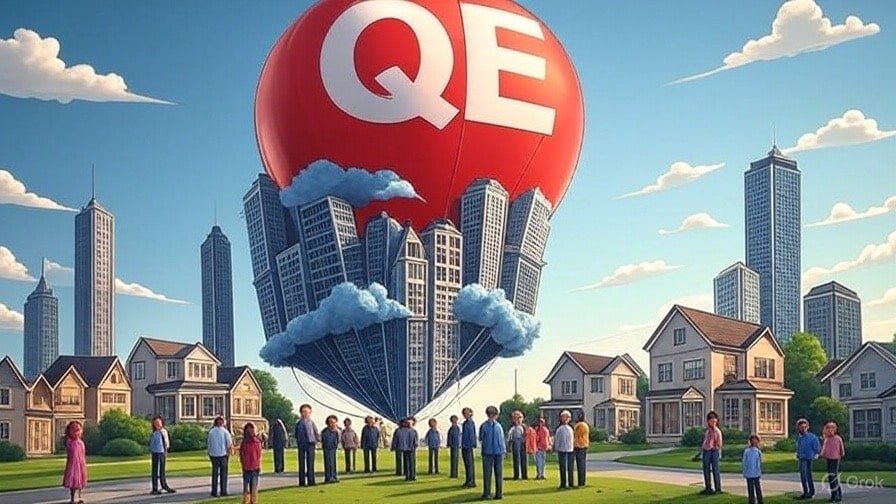Why QE Inflates Stock, Bond, and Property Prices
Quantitative easing (QE) is meant to support the economy, but one of its clearest side effects is the inflation of asset prices. Stocks, bonds, and property often climb whenever QE is active. Here’s why — explained step by step.
Table of contents
1. Central banks buy bonds directly
QE begins with central banks purchasing huge amounts of government bonds. This heavy demand pushes bond prices higher. When bond prices rise, their yields — the returns investors earn — fall. Lower yields make bonds less attractive to investors.
2. Investors chase higher returns
Once bonds pay very little, investors start looking elsewhere. They shift money into stocks, corporate bonds, and property in search of better returns. As more people compete for these assets, their prices naturally rise.
3. Cheap borrowing fuels markets
QE helps keep interest rates at record lows. For households, this means cheaper mortgages, which drives up house prices. For companies, it means easy access to debt, which they often use for share buybacks. Share buybacks reduce the supply of shares, pushing stock prices higher.
4. Confidence effects matter
QE also acts as a public guarantee. Central banks signal that they will not let markets collapse. This reassurance encourages investors to take on more risk. Increased confidence brings more money into financial markets, further lifting asset values.
5. The so-called “wealth effect”
As stock, bond, and property prices rise, those who already own them feel richer and may spend more. Central banks present this as a positive result. But for people without assets, the reality is different: housing becomes less affordable, rents rise, and savings accounts produce meagre returns.
6. Winners and losers
• Winners: investors, large corporations, and property owners, all of whom see their wealth rise.
• Losers: savers, renters, and first-time buyers, who face higher costs and fewer opportunities.
7. The bottom line
QE inflates asset prices because it pushes investors away from bonds and into riskier markets, all while keeping borrowing cheap and boosting confidence. It is less about stimulating the real economy and more about sustaining financial markets.
In short, QE props up stocks, bonds, and property, widening the gap between those who own assets and those who don’t.



